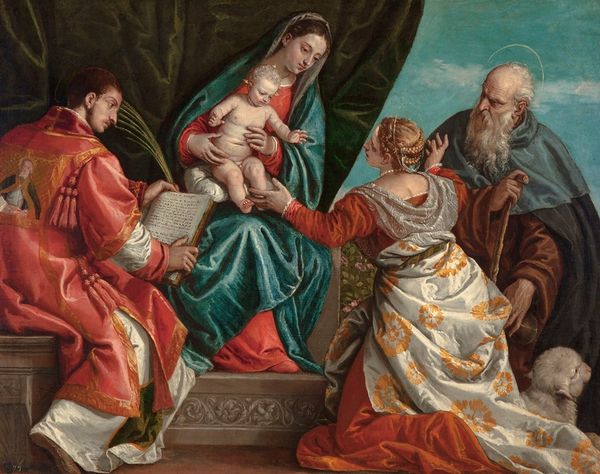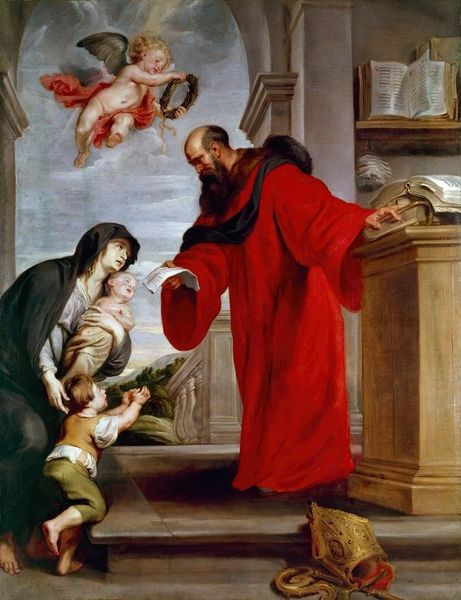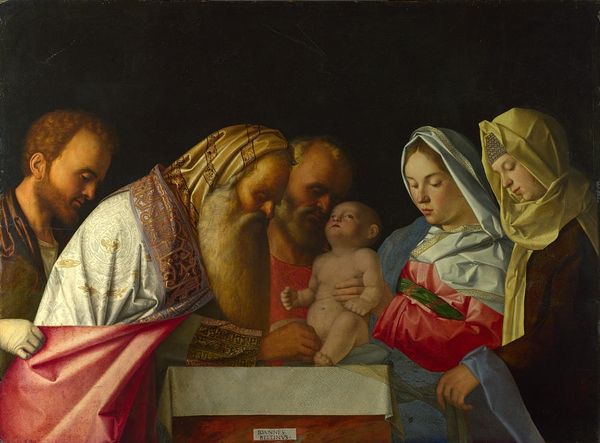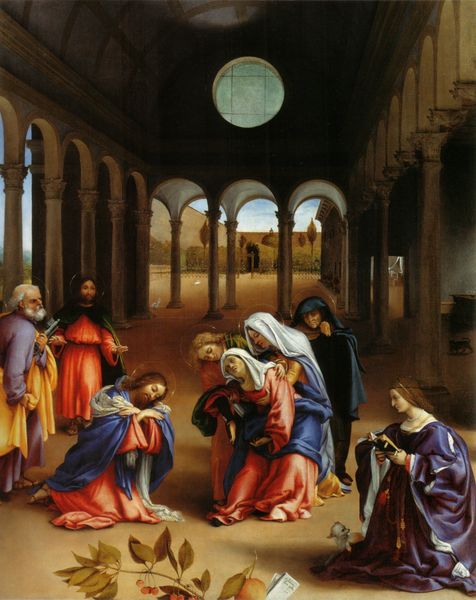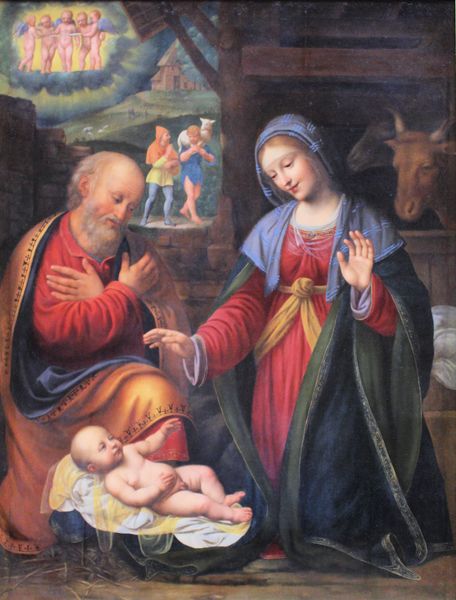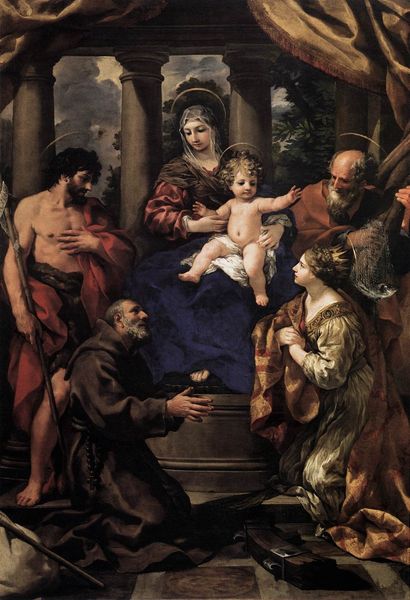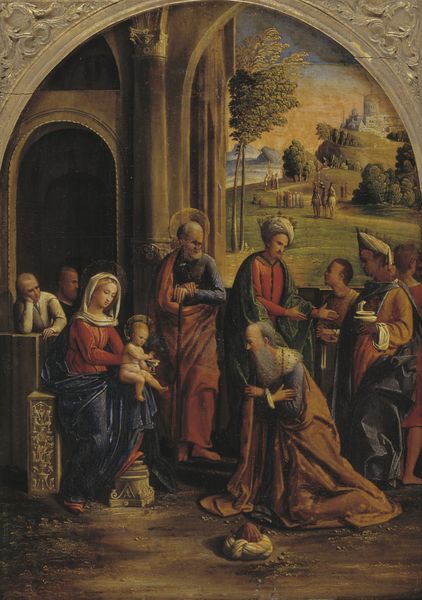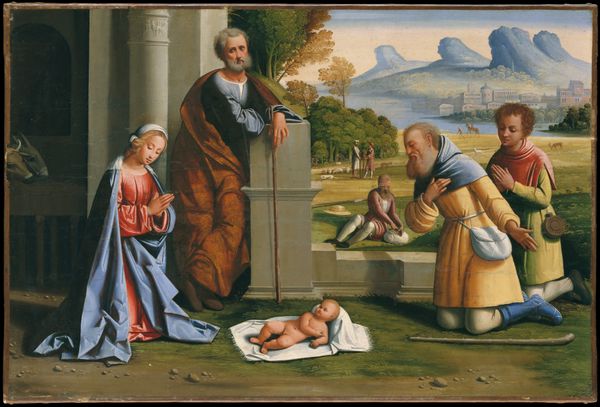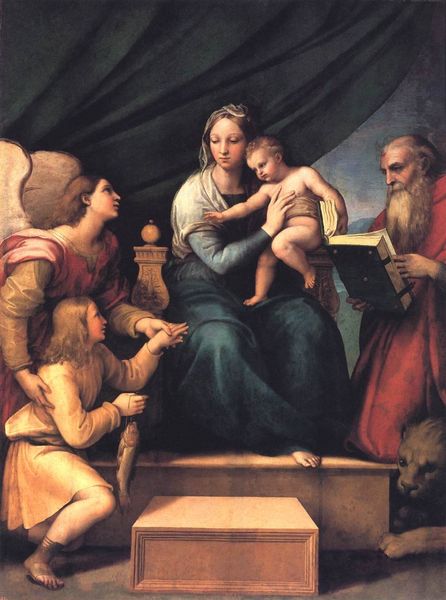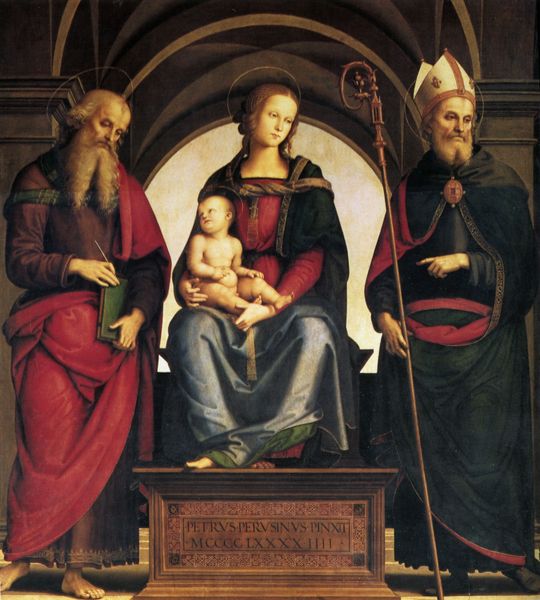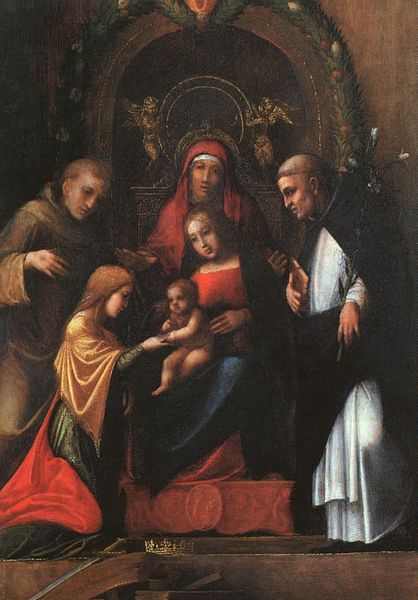
painting, oil-paint
#
portrait
#
painting
#
oil-paint
#
figuration
#
11_renaissance
#
history-painting
#
italian-renaissance
Dimensions: 155 x 159 cm
Copyright: Public domain
Curator: Fra Bartolomeo painted "The Scene of Christ in the Temple" in 1516. It is now part of the collection at the Kunsthistorisches Museum in Vienna. Editor: Immediately, I’m struck by the almost perfect symmetry of the composition. There’s a serenity and quiet gravity emanating from the figures; they seem fixed and posed. Curator: Yes, the composition reveals the essence of the High Renaissance aesthetic: a visual representation of harmony, order, and a subtle balance. The muted, earthly tones also establish a quiet emotional landscape, don't they? Editor: Absolutely. It seems to be a very deliberate stylistic choice, reflecting the historical shift in the social status of art. Consider how artistic patronage at the time, especially from religious institutions, was shifting toward more elaborate, controlled displays of authority. It served as visual propaganda. Curator: It’s a fascinating interplay between the individual figures and their clothing. I notice a beautiful textural dynamic in the fall of fabrics over forms. The clothing becomes almost like characterization through folds and drapes. It communicates a subtle narrative. Editor: That brings us back to Bartolomeo's societal context, where attire held significant symbolic value. He wasn't merely portraying people. He captured the very socio-economic identities they represented within the Church and Italian society. And, may I say, even though Renaissance paintings were made with oil paint and the color spectrum in theory was infinite, we mostly get to see only shades of orange in that painting. Curator: The restricted color palette might also underscore that emotional stillness that ties to themes of reverence and ritual. This painting serves not just as a representation, but as a focused contemplation. Editor: And it speaks to the broader politics of religious image making at the time; it's an Italian master painting of its era and milieu. Curator: Indeed, analyzing it has given me a deeper understanding of both Bartolomeo's intent and the era itself. Editor: The dialogue enriches not just my formalistic views but helps highlight the vital narratives that art always holds within its framework.
Comments
No comments
Be the first to comment and join the conversation on the ultimate creative platform.
